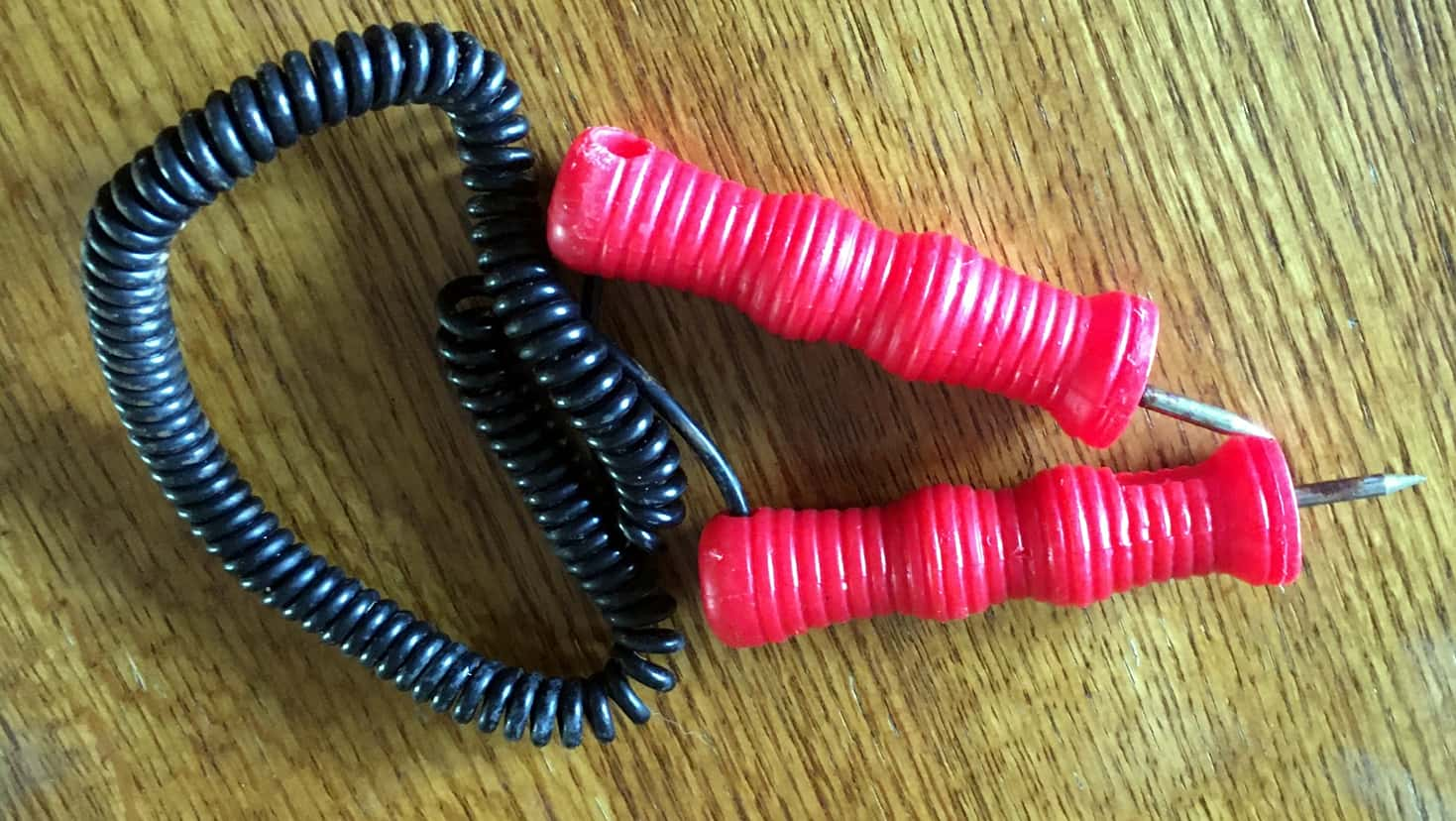
Ice picks are a vital tool in getting out of cold, wet trouble on the ice. Simple, inexpensive and effective, make sure to have a pair around the collar of your jacket at early ice and all season long, just in case.
By Nick Simonson
With the onset of the early ice season, anglers are venturing out on the frozen surfaces of many lakes across the upper Midwest. With those first steps comes a great deal of caution until ice gets thicker and even then, no frozen surface can ever be considered totally safe.
In preparation for the season, it’s important to consider the many safety aspects that help result in a successful trip which is one where every angler stays dry and leaves the ice in the same shape they went in which they went out.
Thick Headed
While the quality of ice can vary from lake to lake, the general baseline for foot travel on clear, solid ice is four inches of thickness. Be aware of those areas where ice may not form as well on certain bodies of water such as places where aerators are in operation, culverts where meltwater is coming in, or even those stretches where waterfowl have been lingering or schooling fish such as whitefish can even impact surface formation. Note that heavy snow may also affect formation and quality of ice. At six inches, ATVs and snowmobiles can be utilized for on-ice travel, and small cars can venture out when ice thickness exceeds one foot. For larger vehicles like pickup trucks, it is best to wait until ice has grown to 16 inches or more in thickness. Remember that these depths are merely general guidelines for clear, solid ice and be certain to check the thickness and quality with a spud bar or an auger when heading out.

Gear Guide
When venturing forth on new ice, few items are as important as a pair of ice picks. Made either from floating plastic or wood dowels with nails or small pointed metal picks and connected with a lanyard that easily goes around the neck or collar of a jacket, these hand-held tools are the best way to get out of the water if the ice breaks out from underneath. Remember to turn back toward where you came from as the ice there is obviously stronger.
Use the picks to jab into the ice and pull up with your biceps and shoulders while kicking hard with your feet. It may be difficult to overcome the weight of soaked bibs and water-filled boots, but the push from the back is important to boost the pull forward should you fall in. Additionally, consider donning a summer life jacket beneath your coat in the early goings to help with floatation, as cold water causes a natural exhale of air from the lungs, making a person less buoyant.
In Case of Emergency
Have a Ziploc bag with a strip of Styrofoam packed in it where you can store your cell phone, a lighter, and a whistle in case of emergency. The Styrofoam will help float the package so these vital items don’t fall to the bottom should they become dislodged in a break through. If you can’t make your way back to a vehicle or cabin, use the lighter to start a fire on shore and get warm and dry off as quickly as possible and the whistle can signal nearby anglers or rescuers. Three blasts is the international code for outdoor emergency, so repeat it until help arrives. Consider packing dry clothes in a larger Ziploc bag back at the truck and stash it in the console for the winter. At a minimum, store long johns and dry socks for the season and remove them in the spring, as hopefully, they don’t get used.
Stay In Contact
Finally, let someone at home – family member, neighbor or friend – know where you will be fishing with as much detail as possible, particularly for trips to larger waters. Provide your cell phone number and those of others you may be fishing with and coordinate check-in and return times and stick to the schedule. With readily available satellite maps, it’s easy to provide a picture of the area you’ll be parking in and your path of travel to help in case rescue is needed. Simply print one out or email it to your emergency contacts so they know where you’ll be.
With these tips, early ice can be a safe and exciting time in the outdoors; in addition to getting on a hot bite, you can stay warm and dry as well and enjoy all the winter season has to offer.

